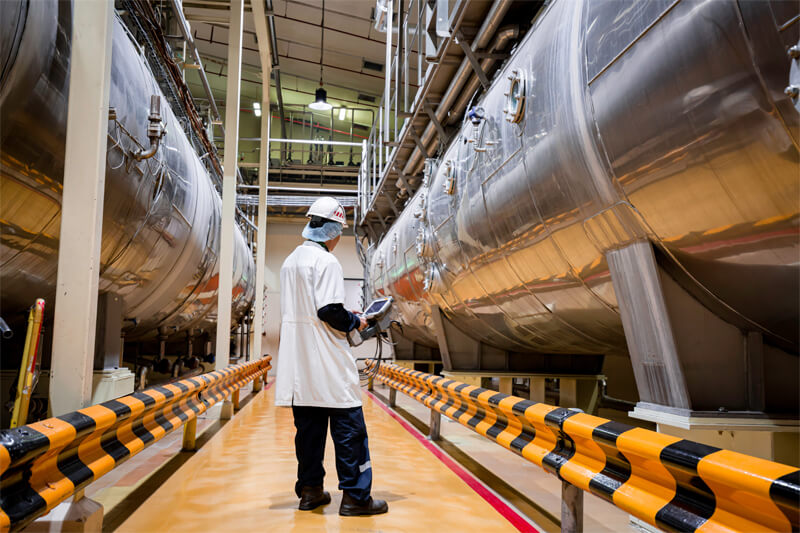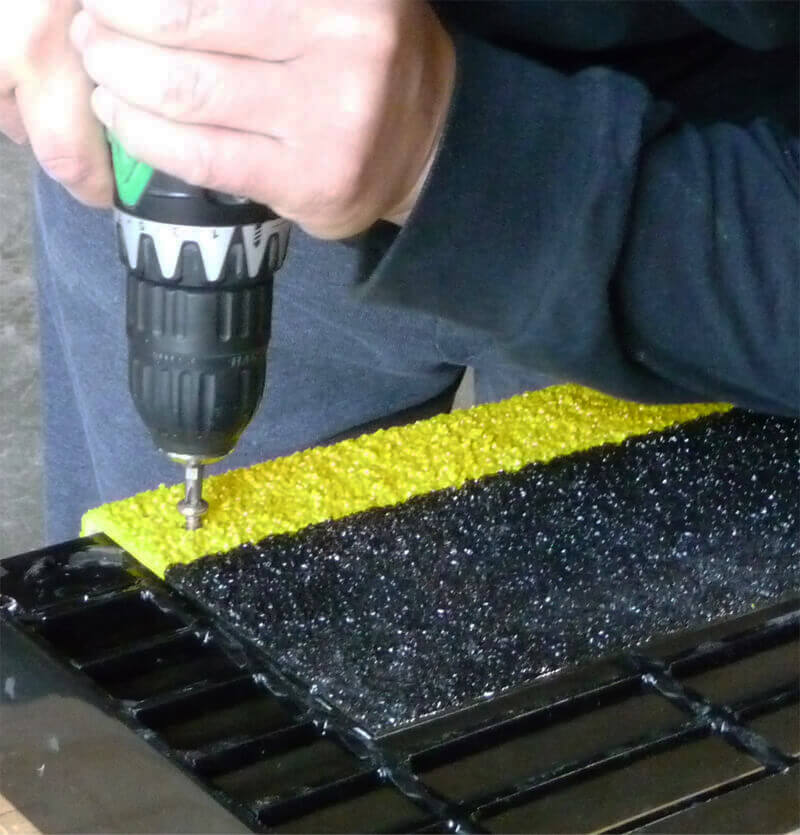Some slip, trip, and fall hazards are obvious — such as wet floors and working at heights.

But what about those lesser-known hazards that can result in a painful and costly accident? Many of the dangers that cause workers to lose their footing are surprisingly easy to forget or ignore completely.
Let’s take a closer look at 7 of the most commonly overlooked slip, trip, and fall hazards that could be hiding in your workplace.
1. Loose floor coverings
According to the National Floor Safety Institute, hazardous walking surfaces account for over half (55%) of all slips, trips, and falls. Loose floor mats, rugs, and stair covers play a big part in many of these accidents.
Entryway rugs that curl up at the corners can catch a foot and cause a bad fall. Similarly, peeling anti-slip tape can actually do more harm than good by contributing to unsafe walking conditions.
The solution is simple. Make sure floor coverings are the right size for the space, lay flat, and are properly secured. Replace curled mats or worn tape with anti-slip covers that are made to size and can be secured over existing surfaces to ensure they never become a tripping hazard.
2. Contaminants
Contaminants on the floor create the perfect conditions for a slip and fall. Drilling fluid, oil overspray, dust, grease, and even spills from the water cooler can make walking surfaces slippery. Studies suggest that contaminants are responsible for at least 80% of the injuries resulting from slips.
Good housekeeping can eliminate many of the dangers posed by contaminants on the floor surface. When contaminants can’t be completely avoided or eliminated — as is often the case in food processing plants, water treatment facilities, and factories — anti-slip mats are a good solution. They’re designed to provide friction to prevent slips and falls, even in wet or oily conditions.
3. Cracked concrete
Cracks in concrete are normal. Over time, floors, walkways, stairs, and sidewalks can shrink or settle and become uneven. When this happens, they can become a serious tripping hazard.
Replacing cracked concrete is the obvious solution, but it may not be in the budget. In that case, anti-slip step and walkway and ramp covers are a quick and relatively inexpensive solution to safely extend the life of your existing concrete.
4. Temporary walkways
Construction ramps and walkways on worksites such as oil fields are an accident waiting to happen. Because they’re new and temporary, they tend to get overlooked when designing safety procedures and controls.
Portable anti-slip rolls are a good solution for temporary walkways. Simply unroll them wherever you need them, then roll them up and store them away when you’re done. They can be reused over and over to ensure slip, trip, and fall hazards are controlled.
5. Distracted walking
We’ve all been there or seen someone awkwardly stumble while looking down at a cell phone. According to the National Safety Council, distracted walking caused over 11,000 injuries between 2000 and 2011 — and those numbers are on the rise. What’s more, over 80% of these injuries were due to falls.
Most people are unaware of the dangers of distracted walking or believe they are not at risk. As such, preventing these types of injuries starts with awareness. Employees must be reminded to focus on the task at hand and controls must be implemented to eliminate potential distractions.
6. Not following safety procedures
Safety procedures can go a long way toward preventing slips, trips, and falls — but they’re only effective if employees follow them every single time. Let’s say, for example, you have a procedure in place that forbids employees from stepping on a certain piece of equipment. All it takes is one shortcut or misstep to cause a serious injury.
Many times, accidents can be avoided by simply posting signs alerting employees to potential dangers and reminding them to follow safety procedures. Anti-slip covers printed with safety messages like “No Step” are one such example that can keep employees on solid footing.
7. Seasonal hazards
While some slip, trip, and fall hazards are present all the time, others can change depending on the season. During the summer, for example, you might prop a door open for better airflow — but this can also allow rain to blow in and make floors slippery. Or, in the winter, rock salt used to melt ice can get tracked inside where it can become a slip and fall hazard.
No matter the season, it’s important to be aware of all potential hazards. Simply keeping an eye out for dangerous conditions can help keep workers safe year-round.
Your next steps
Now that you know these commonly overlooked slip, trip, and fall hazards, you’ll be in a better position to prevent injuries and accidents at your company.
If you are in need of anti-slip products, get in touch with our experts today. We can help you select and install the right solutions to keep your employees safe.
Contact our team to request a quote or sample, or to learn more about your options.







